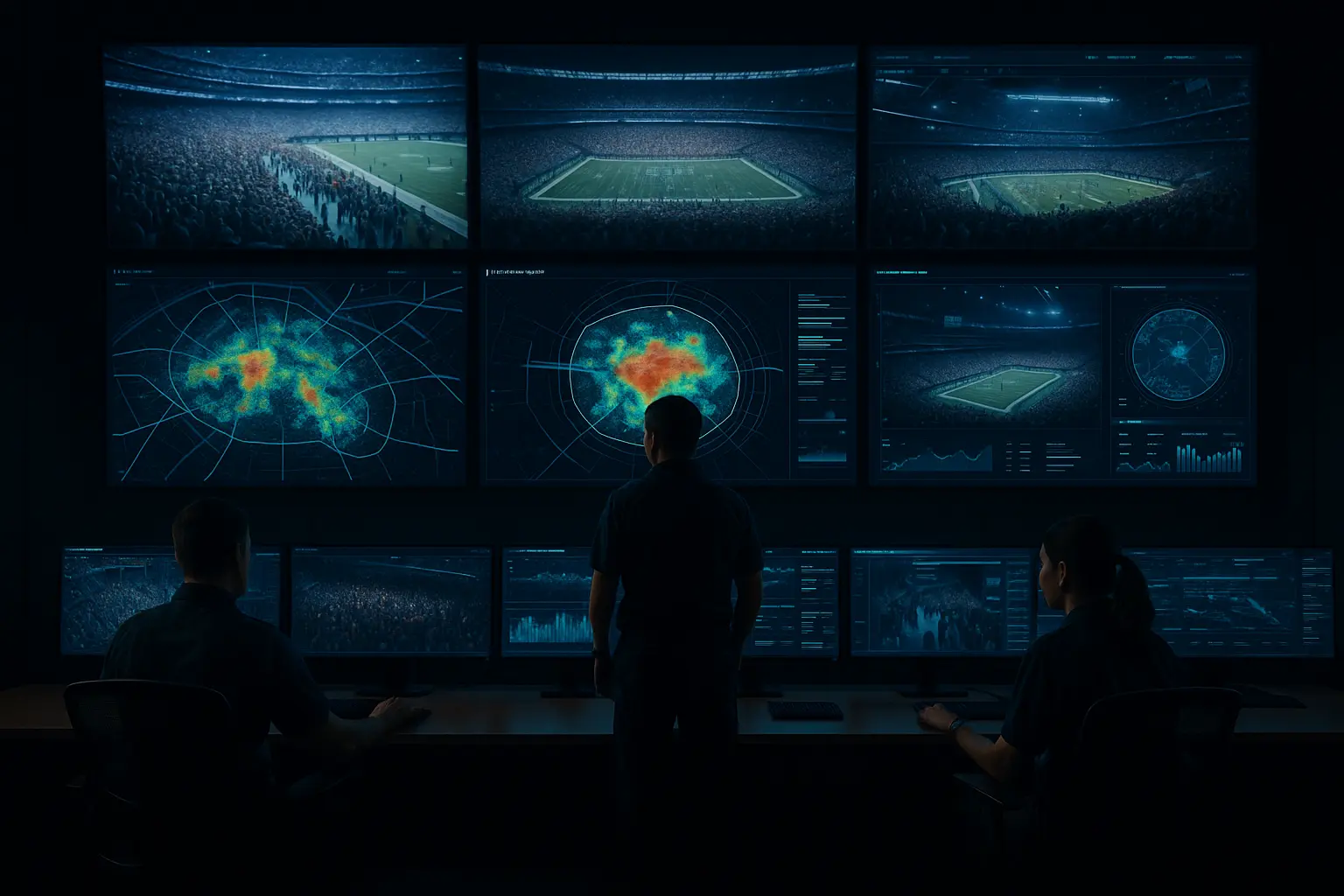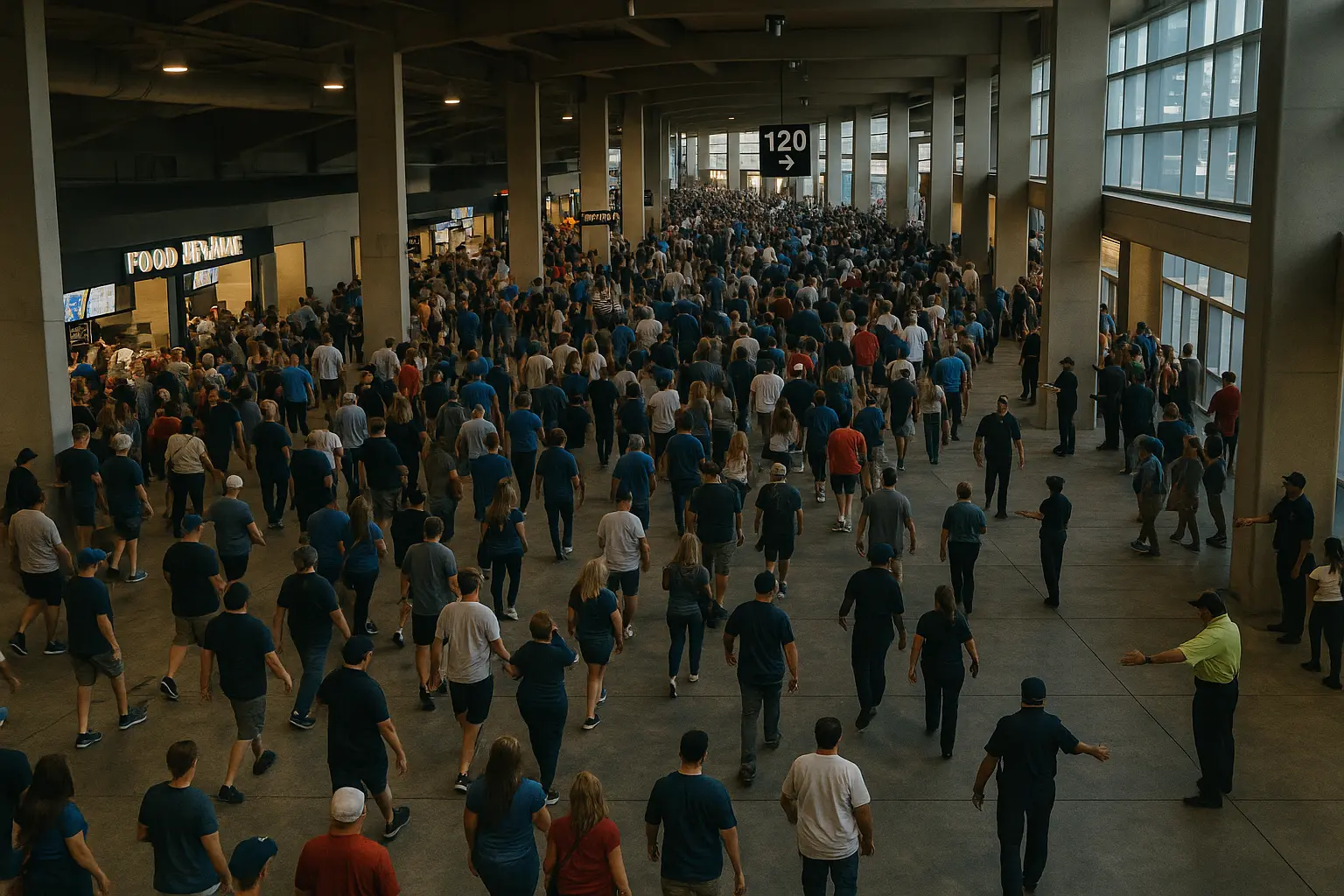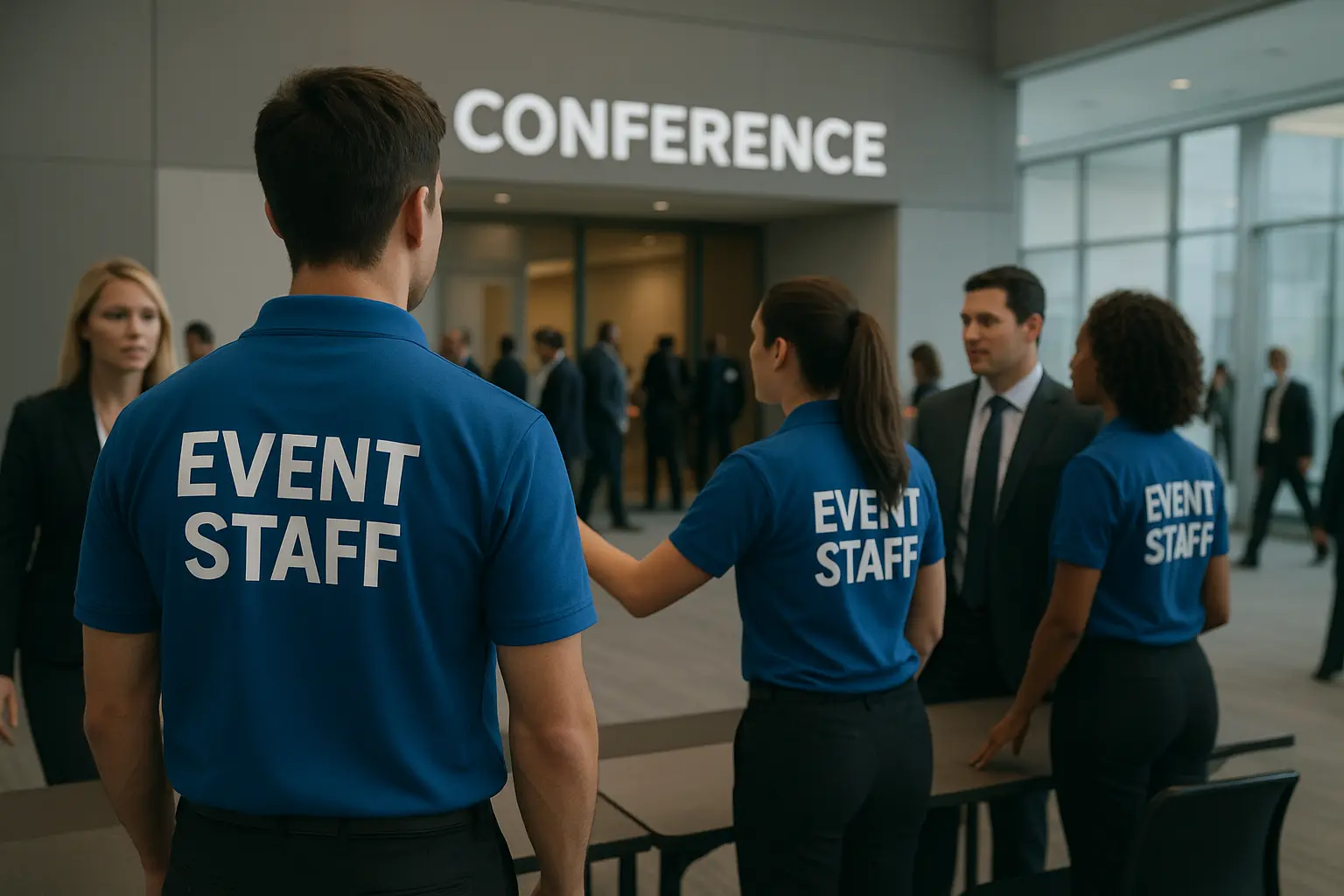The grand opening of a new billion-dollar stadium was a masterpiece of modern spectacle. The ribbon was cut, the pyrotechnics fired, and the 500-foot video board lit up the sky. But the next day, social media wasn't buzzing about the architecture or the team's victory. The trending topic was #GateGate, a chaotic entry process that left thousands of fans stuck in disorganized lines for over an hour, creating a psychological chain reaction of anxiety and lost revenue.
This is a classic behavioral failure. Most operations teams plan for foot traffic using a physical blueprint, failing to account for the human psychology that truly governs crowd movement. This is a common and costly flaw in stadium crowd management.
This guide reframes stadium crowd management as a behavioral science. We will break down the key psychological principles that dictate the psychology of crowd flow and show you how to integrate them into your operational model for maximum control and guest satisfaction.
CEO Excerpt
“We view 50,000 attendees as a complex behavioral system. Our approach to stadium crowd management is rooted in understanding the psychology of how people move and react under pressure. Event Staff engineers a behavioral system that makes a massive crowd move as one synchronized, safe, and positive experience.” - CEO, Event Staff
Why Flow Psychology is a Profit and Safety Multiplier
Understanding the psychology of your crowd is a direct driver of your event's profit and loss statement and its overall risk profile. Every aspect of event flow management has a tangible business implication that can be measured and managed.

The Impact on Revenue
Delayed ingress directly reduces per-capita spend. For every minute a guest is stuck in an entry line, that is one less minute they have to spend at high-margin concession and merchandise stands. Similarly, when unplanned dwell zones and bottlenecks form in concourses, they can block sightlines to key sponsor activations, a challenge detailed in our guide on why companies hire promotional staff to maximize event ROI.
The Impact on Risk & Liability
Poorly managed egress is a failure of large venue crowd control and one of the greatest safety risks at a large-scale event. Clustered exits dramatically increase the risk of crowd crush incidents and elevate your insurance exposure. Proper stadium crowd management is a core component of risk mitigation, and these principles of arena crowd management apply to any large-scale venue.
The Impact on Guest Experience & Reputation
A guest's perception of your event is directly and powerfully tied to the ease of their movement. A frustrating, confusing, or stressful entry or exit is one of the top drivers of negative Net Promoter Scores (NPS). This damages the overall guest experience and directly impacts their likelihood of returning for a future event, hurting long-term revenue.
Five Psychological Drivers of Crowd Behavior
Crowd movement is psychological before it’s physical. Understanding the psychology of crowd flow is the basis for an effective stadium crowd management plan, which is built on these five fundamental behavioral principles. An effective event flow management strategy must account for them all.
Social Proof & Authority Cues
In a large, unfamiliar environment, guests look for signals on how to behave. They follow perceived authority, clear signage, the confident momentum of the crowd, and, most importantly, professional staff. A hesitant or poorly positioned staff member can break this chain of trust and create confusion, while a confident, well-placed team acts as an effective "human signage" system, guiding thousands of people with simple gestures and vocal commands. This is the human side of effective large venue crowd control.
Loss Aversion & Perceived Speed
A core concept from behavioral science is that a continuously moving but longer queue often feels faster to a guest than a shorter but stationary one. The perception of progress is psychologically more powerful than the reality of the wait time. A successful ingress plan designs queues that are always moving, even if slowly, and uses staff to communicate progress, which significantly reduces guest anxiety and frustration. This psychological insight is fundamental to modern arena crowd management.
Proximity Bias & Bottlenecks
Crowds naturally cluster near visual focal points, entrances, concession signs, large video screens, and merchandise walls. This creates self-reinforcing bottlenecks as more people are drawn to the cluster, constricting flow in adjacent areas. A key goal of good stadium crowd management is to anticipate these natural congregation points and design layouts and staffing positions that mitigate this bias before it causes gridlock.
Anticipation & Sensory Cues
Guests accelerate, pause, or surge based on perceived excitement. The sound of the opening act, a change in lighting, the roar of the crowd after a big play, or a direct cue from event staff can trigger a sudden, synchronized movement of thousands of people. Successful arena crowd management anticipates these moments with pre-positioned staff to manage the resulting surge.
Group Territoriality & Flow Dynamics
Groups of two or more unconsciously claim more physical and psychological space than individuals, creating a "group buffer" around them. This alters the effective width and capacity of a concourse or aisle in real time. An effective plan for stadium crowd management accounts for this, as effective large venue crowd control must consider group dynamics, not just the physical dimensions of the space. This is a critical component of successful event flow management.
The Staffing Integration: Deploying with Behavioral Intent

Understanding human behavior allows you to deploy staff with behavioral intent, a core part of modern stadium crowd management. This transforms your team from a reactive presence to a proactive system of control. For a deeper look, our guide on how to hire staff for conventions and stadiums is a valuable resource.
- Positioning Logic at "Decision Nodes": Staff such as ushers and greeters should be placed at key "decision nodes," points where a guest must choose a direction, like a split in the concourse or the top of an escalator. This is where they have the most psychological influence to prevent hesitation and guide the flow smoothly.
- Tone, Presence, and Emotional Authority: A crowd's pace and compliance respond directly to the staff's emotional authority. Confident body language, open gestures, and calm, clear vocal commands from staff reduce guest anxiety and encourage orderly movement.
- Visual Anchors & Signage Psychology: Staff uniforms, color-coded zones, and clear, simple signage reduce the cognitive load on guests, helping them navigate with less hesitation. Well-placed staff who can interpret and reinforce signage for confused guests are critical for preventing small-scale confusion from turning into a large-scale stop.
- De-escalation & Micro-Corrections: Staff trained in behavioral reading can spot the early signs of a friction point, a confused group, a forming bottleneck, or rising frustration in a queue and make "micro-corrections" before the issue escalates. This training is a core part of our onboarding playbook and is key to professional stadium crowd management.
The Crowd Psychology Audit: A Tool for Risk Assessment
Before your next event, use this audit to evaluate your current stadium crowd management plan. An honest assessment will reveal critical gaps between a reactive (high-risk) and a proactive (low-risk) operational model.
Application of Social Proof
- Reactive (High Risk): Staff are positioned wherever space is available. Signage is standard and often ignored.
- Planned (Moderate Risk): Staff are placed at key intersections. Signage is clear and well-lit to provide basic direction.
- Proactive (Low Risk): Staff are explicitly positioned at "decision nodes" (where guests must choose a path) and are trained to use confident, open gestures. Digital signage is used to dynamically reinforce directions in real-time.
Management of Perceived Speed
- Reactive (High Risk): Queues are allowed to form and stop naturally with no communication provided to the guests who are waiting.
- Planned (Moderate Risk): A basic serpentine queue is used to keep the line organized. Staff are present but are not actively communicating with the line.
- Proactive (Low Risk): Staff are trained in "proactive queue communication," constantly updating guests on wait times. The queue itself is designed to always be moving forward, even if slowly, to maintain a sense of progress.
Proactive Bottleneck Mitigation
- Reactive (High Risk): Staff react to bottlenecks only after they have formed and radio for support, by which time gridlock has often already begun.
- Planned (Moderate Risk): Known, historical bottlenecks (e.g., a specific concession stand) are staffed more heavily from the start of the event.
- Proactive (Low Risk): Pre-event AI modeling is used to identify potential new bottlenecks based on ticket sales data and the event schedule. A dedicated, cross-trained "surge pool" team is on standby for instant deployment.
Integration of Behavioral Cues
- Reactive (High Risk): Venue lighting and audio are operated independently of any crowd flow needs and are not considered part of the operational plan.
- Planned (Moderate Risk): Music is used to manage the general mood of the crowd, but it is not timed to specific operational phases of the event.
- Proactive (Low Risk): Audio and lighting cues are integrated directly into the operational plan. For example, using brighter lights and more upbeat music after the event can subconsciously encourage a faster and more efficient egress.
Digital Tools for Behavioral Management
Modern stadium crowd management is heavily augmented by technology. These tools provide the real-time data needed to apply psychological principles at scale.
- Real-Time Data Dashboards:
Modern command centers no longer rely solely on cameras. They use live data dashboards that integrate feeds from turnstiles, point-of-sale (POS) systems, and even anonymized WiFi pings from mobile devices. This allows operations managers to visualize crowd density in real time, identify forming bottlenecks as color-coded "heat zones," and deploy staff before a problem becomes critical.
- AI-Powered Predictive Modeling:
The most advanced agencies now use AI before an event to simulate different scenarios. By modeling variables like a sudden rain delay, a close score in the final minutes, or a major artist taking the stage, AI can predict the resulting crowd movement. This allows for the creation of more robust and data-driven contingency plans for your stadium crowd management strategy.
Mitigating Risk with Proactive Staffing

A psychologically informed approach to stadium crowd management is not just about guest experience; it's a critical component of risk management and legal protection.
- The Legal Standard of Care:
In the event of an incident, venues are legally required to demonstrate they met a "standard of care" for guest safety. A psychologically informed and documented staffing plan, such as a formal event safety plan, is a powerful piece of evidence that shows you took proactive, expert-level steps to ensure a safe environment.
- Documentation for Insurance & Litigation:
Meticulous documentation is crucial. The staffing deployment plan, pre-event briefings, incident response logs, and post-event flow analysis are all vital documents. They are not only essential for refining future operations but also for providing clear evidence of professional conduct for insurance renewals and for defending against potential litigation
Case Study: Managing Halftime Egress at a Championship Game
The Challenge:
At a sold-out championship game, the primary operational challenge was managing the halftime egress: a massive, simultaneous surge of 70,000 people moving from their seats toward restrooms and concessions within a tight 15-minute window. A reactive approach would inevitably lead to concourse gridlock, dangerous crowd density, and significant lost revenue from transaction abandonment at F&B stands.
The Solution:
Instead of simply adding more staff, we deployed a proactive, psychologically-informed solution. "Flow" staff were pre-positioned at key concourse intersections and decision nodes. We worked with the venue to use dynamic digital signage to redirect traffic in real-time based on live density data. Staff were trained to use specific, clear, and confident vocal cues to calmly guide guests toward less-crowded areas, leveraging the principle of social proof to create orderly movement.
The Result:
The proactive deployment of a behaviorally-trained team resulted in a reduction of average concession wait times by 3 minutes compared to previous events of similar size. More importantly, zero major gridlock incidents were reported in the main concourses, ensuring a safer and more positive guest experience during the critical halftime window. This was a clear win for the stadium crowd management team.
Final Considerations for Proactive Crowd Management
The most common failures in stadium crowd management stem from treating guests as dots on a map. A truly successful event understands and plans for the complex psychology of crowd behavior, recognizing that anxiety, perception, and social cues are as important as physical space.
By reframing your approach from a physical blueprint to a behavioral system, you can move from reacting to chaos to proactively orchestrating a seamless and safe guest experience. This is the new standard for managing crowds in world-class stadiums, and you can get an instant quote to see how our teams apply these principles.



.webp)

